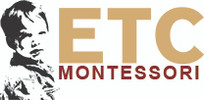
I have always had the ability to organize; it’s something that I seem to be good at and truth be told, I actually enjoy it! There’s something satisfying about a cleaned-out closet, or pantry items stacked sensibly so I can see what I do and don’t have. My family laughs when I have to clean the kitchen just to start cooking dinner!
So it will come as no surprise to you that I worked well in the Montessori early childhood environment. There is a place for everything and an expectation that everything will be put back in its place. It is heaven! Of course, at the end of the work cycle, there may be some materials that need to be shifted or restored, but by and large, the children put everything back where it is supposed to be.
Then I took my elementary training. As we went through the characteristics of the children in the second plane of development, I was cautioned that these older children would no longer have the exactitude that I was used to. These children would be less precise than the younger children and to be honest, there was just a hint of condescension. To this day, in my presentations to early childhood teachers, I forewarn them of my “elementary scoop”; I no longer pick up each item individually and carefully place it in the container. Beads, stamps, and tiles are scooped up and unceremoniously returned to their appropriate container. However, don’t let this action fool you. It is not because I no longer care, it’s because the children are more interested in the concept behind the placement of the materials than noiselessly returning them to the box. As concepts move from more concrete to more abstract and from simple to more complex, so does the necessity of removing one bead at a time; it’s a good thing!


So is organization. As the number of presentations increases in the elementary classroom, so does the need to organize the space. The environment is still prepared, because it is still the vehicle through which we teach. I often quote to teacher trainees something my philosophy instructor said to us, “Physical order precedes mental order.” I can see it in the children, and the adults, as they are beginning to work on new concepts. Everyone recognizes the child who has the rug laid out on the floor but has positioned herself with her back to it and the materials are strewn all over the floor. This is not an elementary child being messy; this is a possible indication that the student may have some difficulty efficiently bringing information into the brain. It warrants monitoring, and if necessary some intervention. How children lay out their work and record it on paper is also an indication of their organizational abilities. Be watchful of those children who open up their recording books at an arbitrary page and start writing!
Dr. Montessori said it best in The New Children; Talks with Maria Montessori by Shelia Radis. “Education,” she said, “is a work of self-organization, by which man adapts himself to the conditions of life.” Children in the second plane of development are inquisitive, dynamic learners ready for all that the classroom has to offer. Dr. Montessori is often asked if this material is all-sufficient for the needs of the growing child. “No,” she says, “it is not sufficient. I have given means to those things that were most difficult to establish. Many more things can enter into the scope of the child, and many more things should and must enter.”
But my biggest push for organization in the elementary environment is the child’s work plan. Let me be clear, there is a difference between a work plan and a work record. The former develops executive functioning and all of the leadership skills and positive attributes that Montessori children are known for, while the latter does not. A work plan is just that; it’s a plan of work. Once children have been given a presentation there is an expectation that they will repeat it to gain a deeper understanding of the concept. Children should plan this interaction on their work plan. This is how children know what work they have and when it needs to be completed. If they are merely recording the work as they have completed it, something is bound to get missed.
In the middle school take on a different role. Although the teacher is responsible for providing the guidance and the direction, it is the student that becomes fully responsible for ensuring that the work plan and the work record are completed. In a group setting, which is often the way a middle school classroom, it is the group that decides how the work plan will be completed. It is the individual who becomes responsible for ensuring that the work record is kept up-to-date. The entire process is a building project that provides the scaffolding for the pursuit of the deep understanding which began in the elementary. Oftentimes, this becomes very evident in children that have come up from a Montessori elementary class.
Secondly, if teachers are writing work on the child’s work plan, then the child has lost one of his/her inherent freedoms, freedom of choice. I find that work plans are the most misunderstood component of the elementary classroom. Perhaps it is because teachers are themselves overwhelmed with copious presentations in all seven areas of the curriculum. I will agree that it is difficult to keep a classroom humming where a differentiated curriculum is the norm. It takes organization both on the teacher’s and student’s part. Organization has to be modeled and it has to be consistent. This is our role as teachers. We ourselves must plan the lessons that are to be given during the week and make sure that we have everything necessary to give those lessons. The skill of organizing is a practical life skill, one that not only prepares the child to fully meet the needs of an expanding curriculum, but also as a preparation for life.

